Artist Interviews 2024
Lovisa Kjerrgren 
By Laura Siebold

Lovisa Kjerrgren is native of Sweden but has called Laguna Beach home for a while. The talented artist is inspired by nature in all its shades and facades. In her art, she translates landscape into “a language of form, color and texture”, thereby creating - what Lovisa calls - “landscape poetry”. In the artist’s portfolio, you can find a series of drawings of cacti, in reference to the desert regions of Southern California. Her paintings document sometimes overlooked details of the coastal landscape and show Lovisa’s appreciation for nature, guided by her keen eye as a landscape architect and powerful observation of her surroundings. Using an array of different styles, Lovisa pays tribute to the seemingly endless contradictions and diversity of life found in nature.
If you happen to be in the Laguna Beach area, don’t miss out and visit Lovisa at her booth at Sawdust Art Festival and at Festival of Arts Pageant of the Masters in Laguna Beach this summer.
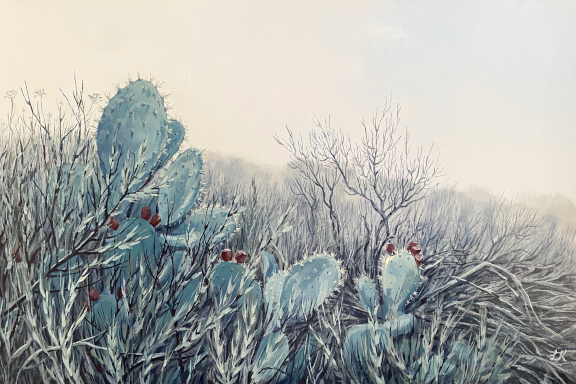
Lovisa, I am excited to feature you in this issue of Art Squat Magazine. We discovered your art at Sawdust Winter Fantasy in Laguna Beach.
Was this your first time at Sawdust? What did you like about the festival and the artist community?
Thank you so much for having me! Yes, you happened upon my booth at the Sawdust in my first year exhibiting with the festival. In fact, it was the very first venue where I put my work up for public display.
The Sawdust is a unique festival in that it runs for such an extensive summer season – over 60 consecutive days - and it is a cornerstone of the Laguna Beach art scene. It’s going strong into its 58th year with over 180 artists signed up to participate in 2024. The Sawdust is a must-see for visitors and equally a treasured local’s spot, not only because of the diverse array of arts and crafts but also for the music and dancing and all-around good times.
As a first-time exhibitor I was touched by the generosity offered by other artists – both old-timers and newcomers - in showing the ropes and providing support and good cheering along the way. The show is a bit of an endurance race given its schedule and duration, and there are times when you feel like a tiny tortoise on a steep and rocky uphill. The commitment and energy that artists and staff bring is contagious, and it extends to the guests - many of whom return year after year, bringing with them the next generation.
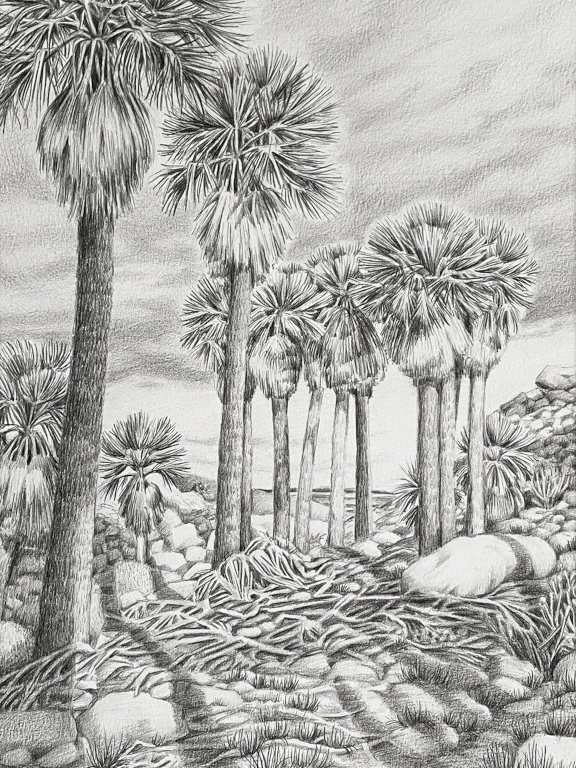
You are originally from Sweden. When did you come to the U.S. to pursue a career in California, and have you been an active artist in both countries?
Spoiler alert - I never nursed a Big American Dream. My ending up in the U.S. had little to do with career ambition and everything to do with human connection. Serendipity and love brought me across the Atlantic, and landed me in Laguna Beach, California in 2015. Little by little, however, America has won me over on her own merits, as I’m exploring her diverse natural and cultural landscapes, and enjoying the endless California summer. Actually, scratch that last part – I’ve come to find it is downright false advertisement. But despite the May Gray, June Gloom, and dubious winter weather we live with on the coast, I feel more and more at home. And it is in the U.S that my art practice matured from a personal pastime into a public-facing pursuit.
Though I studied both art history and fine art techniques back in Sweden after graduating high school, my main background is in landscape architecture. I have a Master’s Degree, I’m licensed in the state of California, and I still practice with a firm in Laguna Beach. This training has been pivotal in shaping the way I see the world, and has brought into sharper focus the subject matter that is central to my art – the things that grow and the things that disintegrate around us.
Perhaps it’s fitting now to say that the advancement of my art practice has become my American Dream. Step by step, I’m following curiosity and passion as they lead the way into uncharted terrain.

Your work is inspired by and focused on nature. Your website states that you paraphrase the language of landscapes into color and lines. How does your process of creation look like?
Observation is always the beginning of creation. I relish in the outdoors and strive to stay attuned to my surroundings, whether I’m hiking along a trail or running up a hill or sitting on the beach. The grandest things and the most mundane little things can equally transfix me. The gradient purple of distant mountains as they recede into the haze of a late afternoon. The way the shadows move through the sage brush when grazed by a breeze. The dark beads of faded black sage flower heads still strung on erect stems against a blue autumn sky. I could go on and would probably bore you, but snapshots like these etch in my mind, and pull on something deeper – a feeling of breathing in sync, for a brief moment, with a world that’s at once both becoming and falling away. It’s a desire to express that feeling that brings me to create.
Most often my representational artwork is derived from an impression or a moment that has moved me, and that I’ve felt compelled to interpret. In those instances, I transition fairly quickly from thumbnail composition sketches to full scale paper or canvas, refining the ideas on the ultimate substrate. Graphic or abstracted pieces tend to have more thorough back-end exploration, with iterative sketches and color experiments. Sometimes I also create digital mockups to play with composition and palettes, drafting a blueprint for a final piece.
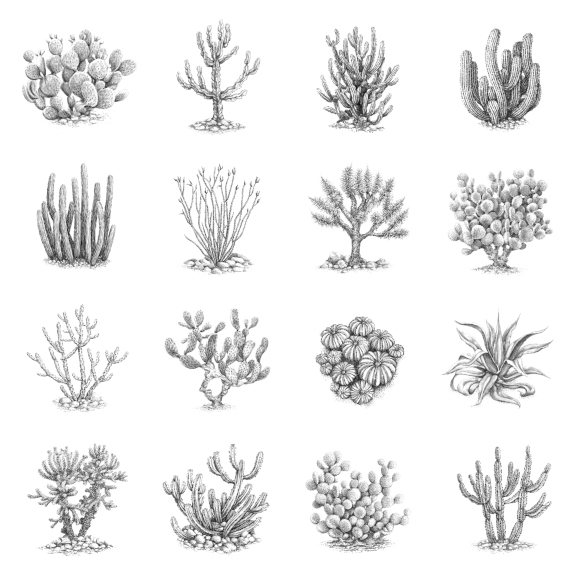
I was captivated by your black-and-white renderings of cacti. What fascinates you about desert landscapes and how do you translate them into art?
The desert is a place of contradictions. It seems desolate, yet it’s full of life. It appears petrified, yet it moves with utmost intent. The desert rewards the patient observer.
Visually, its characteristics appeal to me with strong, almost architectural landforms and plant shapes that upon closer observation are richly detailed. I was recently hiking in Joshua Tree National Park, and I felt like I was walking through a tray of powdery pastel eye shadows. The colors were so pronounced and yet so delicate and airy. That’s the kind of stuff that gives the spirit goosebumps.
My desert work draws on these attributes of the landscape itself – bold form with fine-grained textural qualities. Restrained execution – in the case of my ‘Prickly’ series, reduced to a black and white essence of form and texture – represents the simplification of life that the harsh desert climate necessitates.
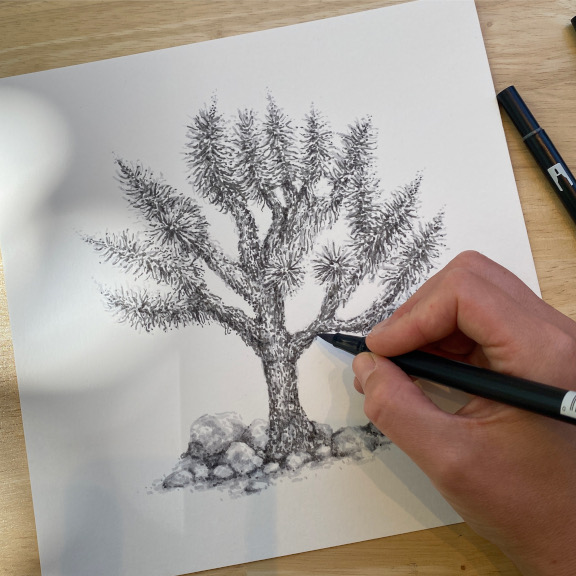
Have you used your voice as an artist to draw attention to cultural or environmental causes? Do you think that art has the power to transform people’s perception of reality, and deepen their understanding of nature and the environment?
Art can shine a spotlight on important matters, and the canvas be a stage from which to send a message. Meaning however – the interpretation of that message - is always in the eye of the beholder. To be successful, I believe art should not lecture but rather invite interpretation and dialogue, whether by gentle or provocative means. My work is not overtly cause-driven, but it invites reflection about the natural environment and our place within it.
Art has always had and will always have transformative powers, both for creators and consumers. To make art is to throw questions at the world and refract the answers through the prism of your creative process – whether you want to subvert the order of things or simply meditate on it. Either way, it won’t leave you untouched.
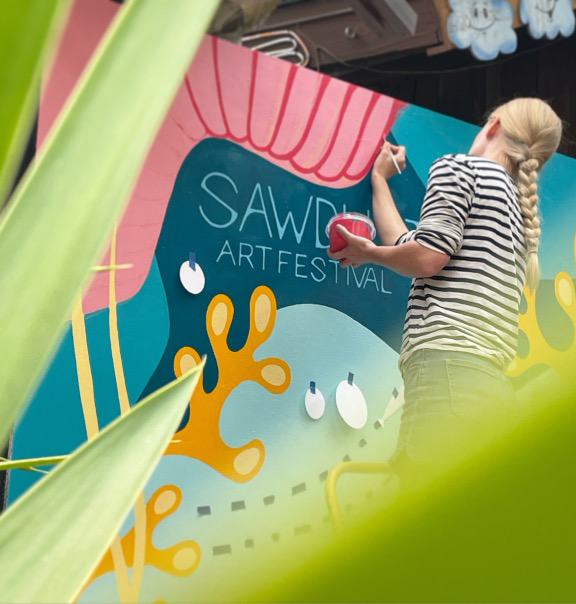
Have you ever been in a situation as an artist that required you to adjust your technique and style to fit in and move forward? Please go into detail.
I work in a range of mediums, from acrylic paint to color pencils to grayscale markers and pastel, to create art with quite a broad stylistic span from representational landscapes to simplified graphics and playful abstractions. With that, I’m inclined to treat requirements for a certain type of execution – even if outside my typical expressions – as a creative challenge.
I’m not overly concerned about maintaining a uniform stylistic signature. I see value in experimenting and in tailoring technique and style to serve the intent of the piece at hand. This attitude can probably be attributed to my background in landscape architecture and design. When working on a project specific to a physical site and to a certain client’s brief, style and aesthetic expression must always be contextual – derived from the setting, and tailored to fit intended uses. In my art practice, scale, setting and message all comes into play when making technique and style decisions. While much of my work is intricately painted or drawn, I have executed larger environmental pieces – such as a 4’x16’ hand painted banner for the City of Laguna Beach and an 8’x8’ mural wall for the Sawdust Festival grounds – using bold and bright graphics that pop from a distance. Sometimes it’s as simple as choosing the right tool for the job.
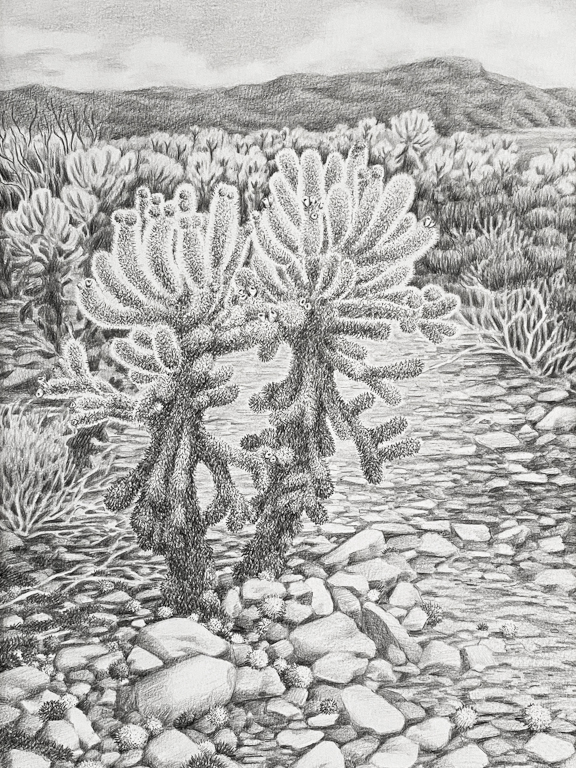
How can engagement with nature teach us about art and vice versa?
Art begs us to be present in the moment and engage intently - intellectually or physically, depending on the medium - with the piece before us. When we decide to go see an exhibition we are already mentally primed to be receptive of new impressions and to contemplate them. If we apply that same intentionality when we set out to experience nature, that keenness of observation, and want to be surprised, we are more likely to discover new things and have profound experiences.
Nature, as opposed to art, extends without physical limit. Unbound by any frame or room, its composition shifts with every step forward or tilt of the head. Recognizing the infinite vantage points to represent nature in art, I am interested in the different scales of the landscape. Oftentimes we are drawn to the vista – wanting to climb the hill or the mountain to look down over the valley or out towards the ocean. It gives us a sense of control. But if you turn your gaze down towards your feet, or kneel right where you stand, you are bound to discover other scenes, and then scenes within those scenes, if you look even closer. Scenes equally, if not more interesting, where form and color becomes increasingly abstract as elements reduce in scale. Nature and art both have a capacity to reveal new perspectives on the world and our place within it.
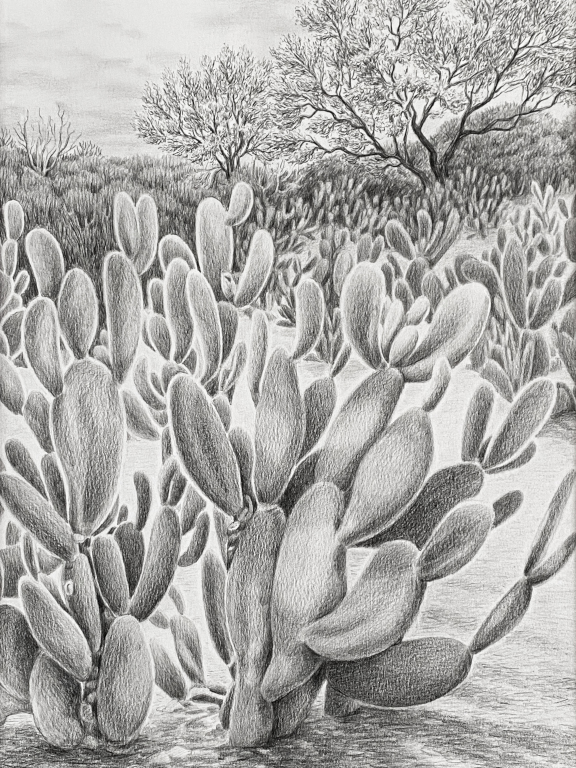
What determines success at an art fair or exhibit for you?
Counting connections matter just as much, if not more, than counting sales. Sometimes someone falls in love with a piece on the spot and can’t leave without it, but I’ve also had great experiences with clients who have discovered my work at a show and later reached out for a commission or to purchase a particular piece. Being able to engage in person with collectors is very rewarding - to talk about the ideas driving the work, the process of creation, and what it means to them. It makes a sale all the more meaningful and personal.
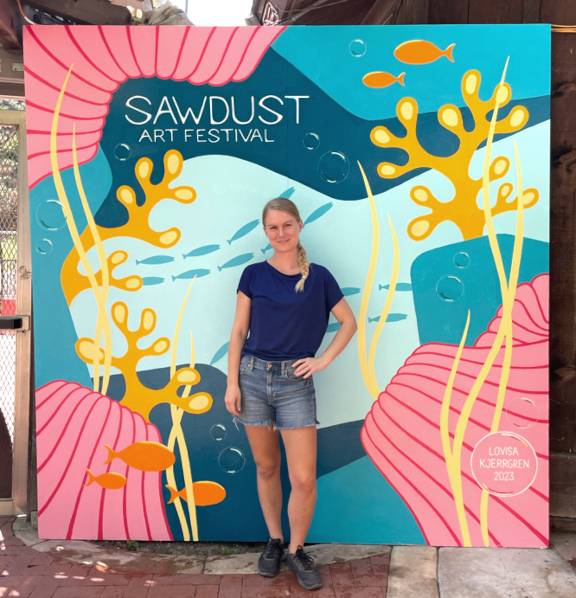
As a European citizen, do you feel that you have been given the same opportunities as local, and male artists in the U.S.?
In the US that I have come to know, everyone is from somewhere and everyone has a story to tell. Whether you were born on this block or traversed continents to get here, these stories, the different threads of where we’ve been and where we’re going, weave together the quilt of American society. Diverse experiences and perspectives on art can shine new light on American issues, and invigorate an ongoing creative dialogue. Every stitch matters.
My European background is integral to my identity, perhaps even more prominent here by virtue of being different than had I stayed in Stockholm. I see it as an asset. It defines my frame of reference and informs what I make of everything I encounter here. Though I’m an emerging artist, I’m grateful to see my creative efforts and offerings be well received and recognized. I suppose it doesn’t hurt to specifically have a Swedish heritage to draw from in the world of art and design, where Scandinavian aesthetics and craftsmanship is generally well regarded. Oh, and of course, I’d be happy to flat pack any piece of mine for shipping if you’d like, IKEA style!
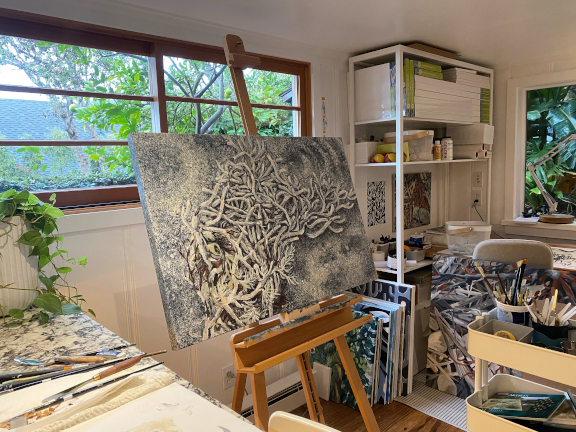
What has been the greatest achievement of your career so far? What are your plans for the future?
I am thrilled to be exhibiting at the Festival of Arts in Laguna Beach this summer. Being accepted into this longstanding and competitive juried show as an emerging artist is an honor and a welcome testament to the quality of the work. I will also have my art on display at the Sawdust Festival, and plan to focus on slightly different stylistic directions at these two venues. I have lots of ideas that I look forward to explore and execute leading up to summer, so stay tuned.
This is an exciting time in my life, with many things in motion. I feel the ground shifting under my feet while I’m dancing around to find a new rhythm to the step. I am grateful to look over my shoulder and see how my career as a designer and my pursuits as an artist have grown and evolved, setting the stage for chapters yet-to-be-written. Many things I have invested energy in over the years – my landscape architecture education, my design practice, my personal creative explorations – are coming together in new constellations, allowing me to leverage the knowledge and skill I have acquired to solve new creative problems.
The most pivotal shift has been internal, finding the determination to make time and make space (literally – I work out of a darling buy very tiny apartment) for the play and the practice of art, and place it at the center of my life. I don’t know exactly where the path will lead, but I am ready to take more scenic detours off the highway of life to immerse myself in new personal and professional landscapes. I have no doubt, it’ll be inspiring.
|
|

